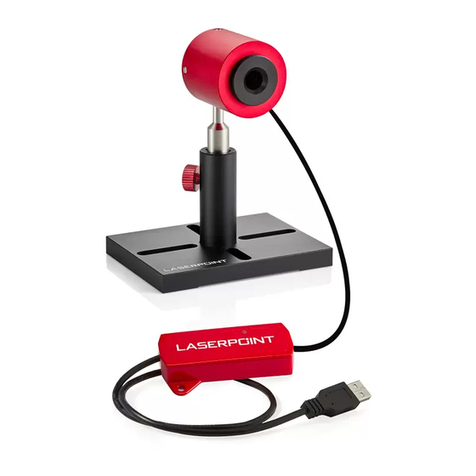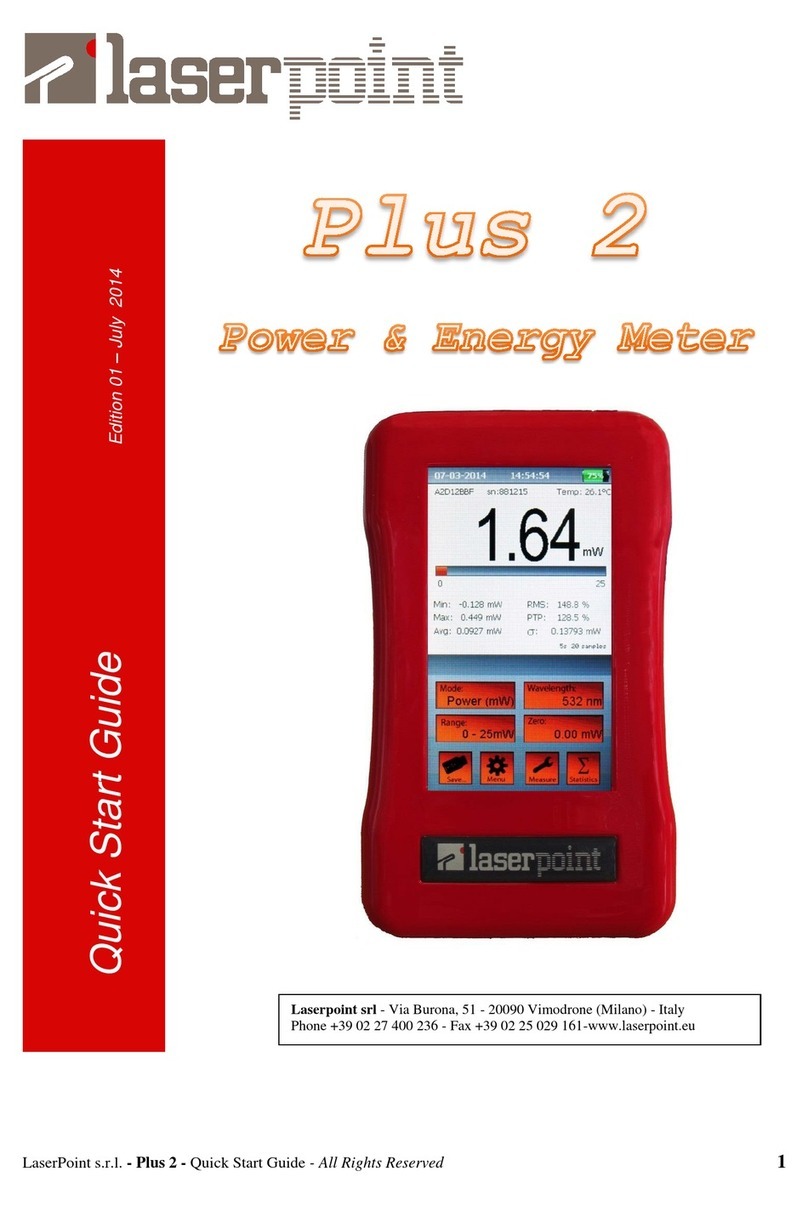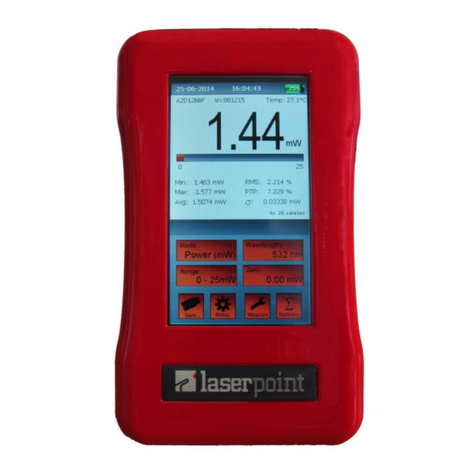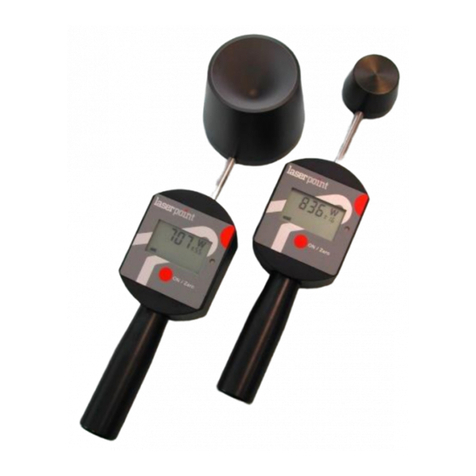Operation Section
1-Safety
Take all the required safety procedures needed when
working with laser beams and wear protection glasses all
the time! The laser beam must hit ONLY the sensor head
front side. Avoid to incidentally expose the protected
stainless steel stem to the laser beam as dangerous back-
reflections can be produced! Never touch the sensor head as this part can reach
70°C of temperature!
In the case the laser power density is close to the damage threshold of the head
absorber coating, damages like coating discoloration or underlying metal melting
could occur. In both cases consult LaserPoint.
2-Starting the Instrument
To switch on the instrument, keep the ON/Zero button
pushed until the LCD shows the Fit Model (Fit 50, Fit 200,
Fit 500 shown in 2 steps), then release it (this step takes
approximately 2 seconds). The instrument will also display one of the 2 available
laser wavelengths: e.g. CO2. The wavelength displayed the first time is random;
to change it refer to Paragraph 10 of this section.
3-Auto-check Cycle
When the ON/Zero button is released, the instrument starts
an auto-check cycle during which both circuit and display
are controlled and reset. During this cycle, the LCD shows
all available segments of alphanumeric characters and the
bar graph at full scale. Upon completion of this cycle, the LCD displays the last
recorded value of measured power.
4-Zeroing/Resetting
Before starting the first measurement or a new one, the
instrument needs to be zeroed; to do so, just push and soon
release the ON/Zero button. After the LCD has displayed
“CAL”, the lateral LED turns steady green and “FIT”
blinks. Any previously recorded value is zeroed and the instrument is ready to
measure.
An automatic Zero is performed by Fit after every measurement.
4
5-Measurement Cycle
Check the laser shutter is closed; align the probe to the
laser beam path and start the measurement cycle by opening
the laser shutter. Avoid taking measurements during laser
warm up or beam instabilities.
The measurement starts automatically. During the acquisition time, “RUN” and the
LED both blink for approximately 5 seconds. The bar graph indicates the head
temperature on an arbitrary scale.
6-Measurement Display
As soon as the measurement is over the LED turns into
steady red. Remove the probe from the laser beam: the
display shows the actual power, and the remaining thermal
capacity. If the bar graph is below full scale, one or more
measurements can be carried out before the sensor head needs to be cooled.
Approximately after 10 seconds the LED automatic shuts off. The FIT performs an
automatic Zero and the LED turns steady green. The LCD shows the last measured
power value . Return to Par.5 for a new measurement
7-Cooling the Head
Should the probe reach its limit temperature, the LCD
shows “ COOL” and the LED blinks red. Use
spontaneous or air forced cooling. Never use liquids!!
As soon as the temperature returns below its maximum
allowable limit, the LCD displays the last measured power value.
Warning: sudden cool downs and subsequent strong temperature variations on
the head may cause a re-start of instrument and spurious measurements.
8-Auto Off /Battery Warning
When the battery pack is getting exhausted, its symbol
pops up on the LCD to warns that approx. 10 hours of
residual power remain. Note: to increase the battery life,
the instrument automatically switches off after 5 minutes
of stand by operation.
To retrieve the last recorded value, return to Paragraph 2. After the internal auto
check cycle, the display will show the last measured value.
To intentionally shut the instrument off, keep the ON/Zero button pushed until the
LCD shuts off (this takes approximately 4 seconds).
5






























